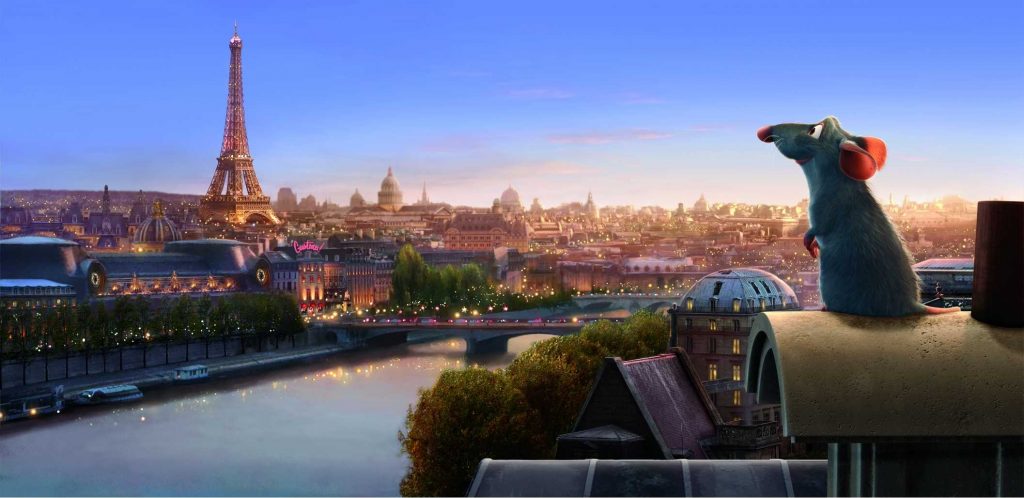
Brad Bird’s 2007 computer-animated film Ratatouille uses its mode as animation to establish an alternate logic to the real world, enabling communication between humans and animals. The turning point that establishes this communication is when Linguini captures Remy in a jar.
After asking a series of aggressive questions, Linguini calms down, and begins to take a more hospitable approach to Remy. Bird uses a close-up of Remy cowering in the jar, Linguini’s hands outstretched and firmly grasping it, the River Seine as the backdrop. This image suggests that behind the film’s bright hopefulness is the truth that communication is only possible because he has been captured. It also exemplifies Steve Baker’s point that, “Culture does not allows unmediated access to animals themselves.”[1] Instead, like Remy, animals are trapped within a human frame where a communication, or access to the ‘real’ animal is mediated by a layer of human culture. This moment in the film can thus be read in relation to its filmic mode, animation. The jar is a human cultural object, the layer that mediates the contact and access to animals. Like the jar, animation is also a product of human society, the layer of culture, which has been used to capture and establish a representation that expresses an idea of the animal.
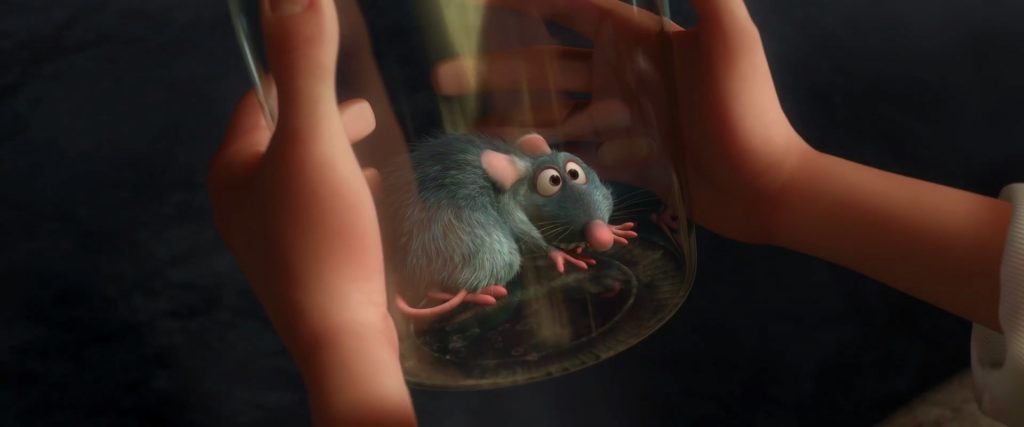
The jar’s transparency allows for Linguini to see Remy’s physical gestures, enabling him to communicate with, and understand, the captive animal. Animation has its own kind of transparency that allows for human understanding of animals: it establishes alternate logic, producing an unambiguous presentation of animal thoughts and feelings. The dark backdrop of the Seine contrasts with the brightness of the foregrounded image of Remy held in the jar. This incites an extra level of transparency, as its starkness produces a clear image of Remy, revealing how animation’s transparency extends to its clarity as a visual form.
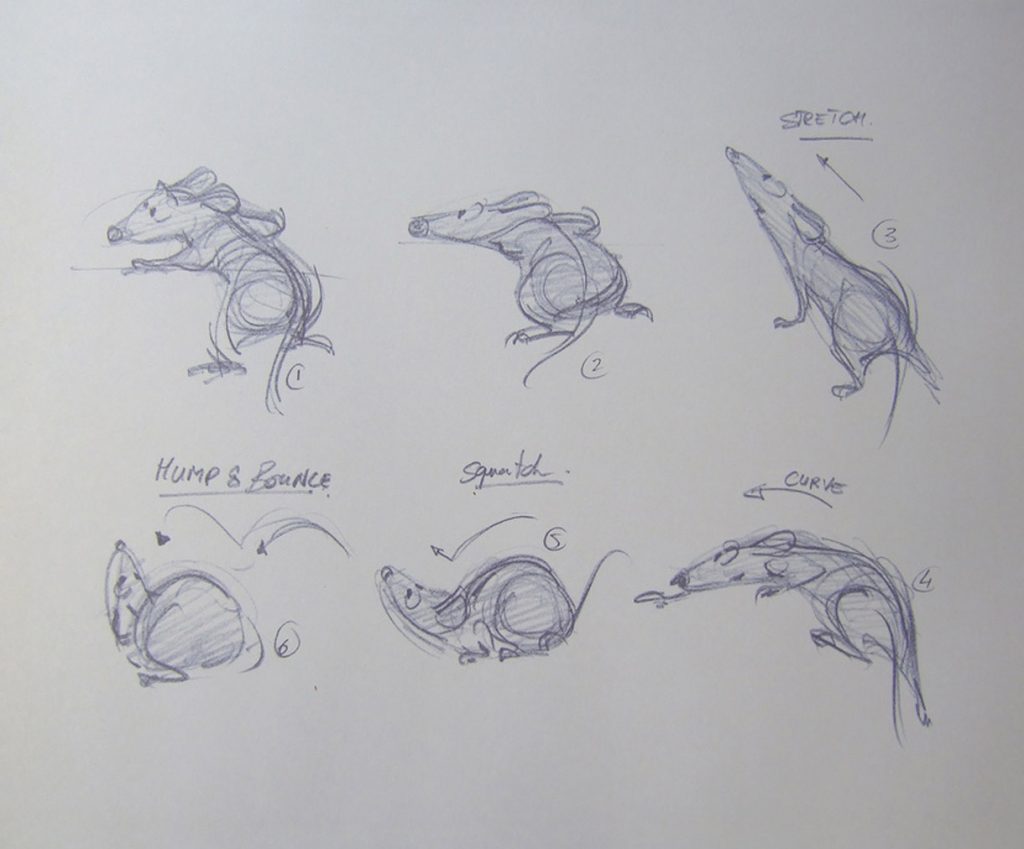
Concept art for Ratatouille. Animal movement is captured and rendered in line drawing. It is a capturing of animality in art.
Linguini’s hands dominate much of this shot, just as they dominate the jar within which Remy is captured. This echoes the human influence that surrounds the capturing of, and representations of animals, whereby the hands use the tools for capture. As such, humans undoubtedly remain the dominant force. It alters the message of the film: “anyone from anywhere can cook.” Instead it shows that there are those in control, exemplified by Linguini the human, and there are those not in control, such as the rats. For Remy to succeed and for communication to be established between the human and animal he needs to be trapped and become subjugated under the control of another.
In essence, because this human dominance is influenced by an ideological set of expectations, by animal subjugation in cultural practices, these different modes of capturing animals always contain within them barriers to complete animal understanding. The distance between Linguini’s hands and Remy, between the touching of the human and the animal, exemplifies the impossibility of a complete comprehension, of a complete contact, which cultural framing, embodied by the jar, prohibits.
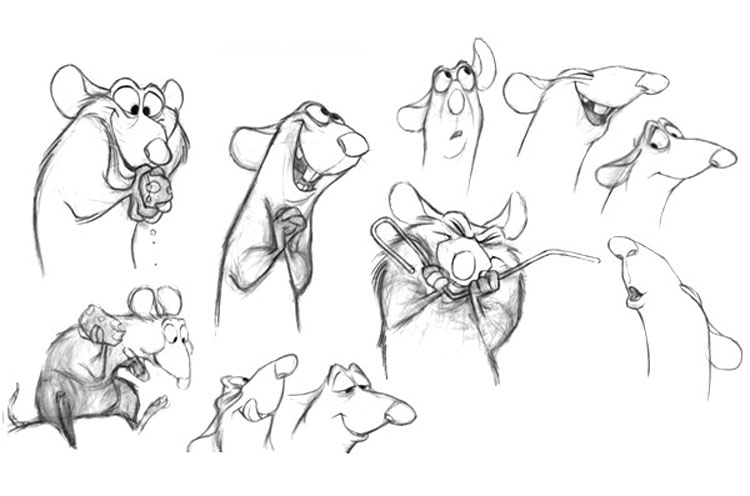

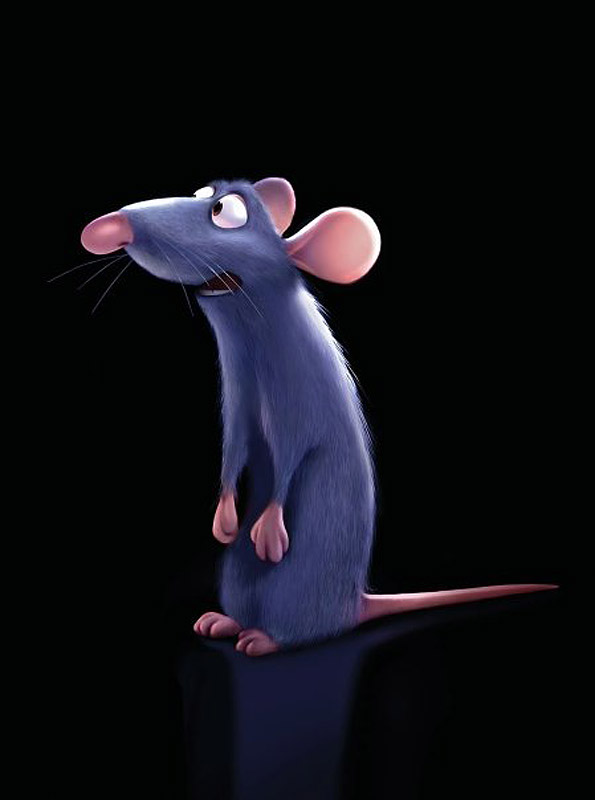
This concept art shows the process of constructing Remy. It reveals how animation alone involves capturing a single animal in multiple different forms, alternate representations, which in turn produce a wealth of interpretations and understandings.
However, whilst this may be true, by reading this moment as symbolic of animation, a possibility is revealed. The possibility of dialogue between human and animals, enabled by the established world logic of the film, leads to a challenge of Linguini’s expectation of the animal. The film uses the notion of full communication between human and animals to challenge our preconceived ideas about the position and role the animal plays in our society. By capturing animals artificially, that is to say, capturing them within an artifice, within art, new approaches to animals can be revealed. Although it is not claiming that rats can cook, the challenge the communication poses is a blurring of boundaries between humans and animals, where artificial constructions such as species divides and cultural practices are destabilised. It provokes a rethinking of how we communicate with, and how we express, the animal.Endnotes
[1] Steve Baker, ‘History and Mentalités’, in Picturing the Beast: Animals, Identity, and Representation (United States: University of Illinois Press, 2001) p. 3-33 (pp. 10).
Bibliography
Baker, Steve, Picturing the beast: Animals, identity, and representation (United States: University of Illinois Press, 2001).